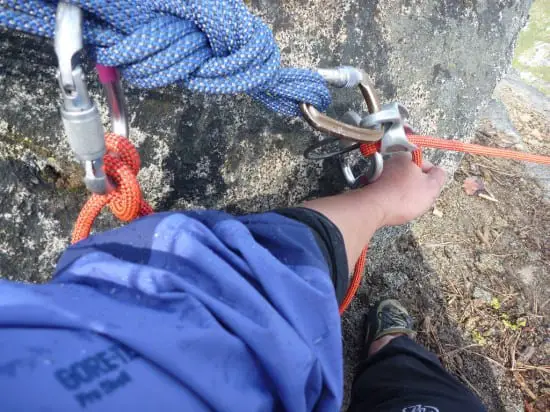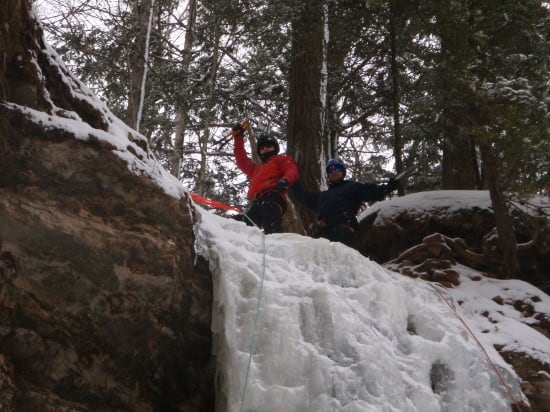One of the coolest experiences I’ve had was a recent ice climbing excursion to the upper peninsula of Michigan. The time was spent with a great group of guys all looking for adventure and finding it in the great outdoors. Not only that, it also taught me a valuable leadership lesson.
A term often used in climbing, whether it be rock climbing or ice climbing, is belay. For those of you who don’t know what belaying is, belaying refers to a series of techniques climbers use to exert friction on a climbing rope so their climbing partner will not fall far. The climber on belay does this by applying friction through the use of a belay clip and keeping the rope taut.
Being on belay is an interesting experience. You’ve basically got another person’s life in your hands. If you’re not focused on the other climber, there is a chance you could cause a major accident. At the same time, it’s also a very rewarding experience. Especially when you help someone ascend the ice face to conquer the climb.
Do I have your attention? Are you wondering what this has to do with leadership? Through the ice climbing experience, I was able to see three areas belaying relates to our roles as a leader.
Belaying can be uncomfortable. So can leadership: When you’re on belay, you’re not very active. Other than a few arm motions, you’re fairly stationary. In cold weather, when you’re belaying while your climbing partner is climbing a waterfall this can quickly lead to you becoming very cold and uncomfortable. There will even be times when you will get wet because of the flowing water.
As leader, you’ll be put into situations where there is great discomfort. Difficult situations will arise and cause you stress. You will have to make difficult choices that will affect the lives of those on your team.
All of these situations can be uncomfortable. Yet great leaders persevere through the tough spots and lead their team well.
Being on belay is about helping another person rise to the top: As a belayer, you’re helping another person ascend to the peak. Without you, they may have failed to reach the top or, worse, fallen and become injured. It’s all about the help you’re providing that allows them to reach their goals.
Leaders who are looking out for their team do much the same. Great leaders know it’s not about them, it’s about their team and helping them reach their full potential. They’re looking out and finding ways to help those under them rise to the top. With a pull here (encouragement) and a catch there (empathy), leaders lead their teams on to personal and organizational success.
Belaying teaches you to be ready: As your climbing partner is going up the rock face or the ice wall, there is always the risk of a fall. You’ve got to keep your eye on the climber and make sure the rope is tight. You never know when there will be a bad strike and the climber will need your assistance.
You need to do the same as a leader. Watch your team, give them slack, but be ready for when your team will need you.
Leaders know they have responsibilities to their team. They weren’t blessed with the role of a leader just to benefit themselves.
To be a great leader you need to get uncomfortable, help others, and to be ready for unexpected situations. Do these and you’re on your way to becoming a leader worth following.
Now, are you ready to get on belay?
Question: When have you learned a leadership principle from something not related to leadership? Please share your thoughts in the comment section below.



Please note: I reserve the right to delete comments that are offensive or off-topic.